The Marshall Islands, located in the North Pacific Ocean, is a small island country consisting of 29 coral atolls and five single islands. The region is known for its tropical climate, with temperatures ranging from 80 to 90 degrees Fahrenheit year-round.
The islands are home to a diverse range of flora and fauna, including coconut palms, breadfruit trees, and a variety of marine life such as sharks, dolphins, and sea turtles. The coral reefs surrounding the islands are also home to a vast array of colorful fish and other sea creatures.
Despite being a small and remote region, the Marshall Islands boast a unique and vibrant ecosystem that is worth exploring. .
Types Of Ants In Marshall Islands
The Types Of Ants In Marshall Islands are listed here: Trap-Jaw Ants, Carpenter And Sugar Ants, Acrobat Ants, Trailing Pharaoh And Timid Ants, Crazy Ants, Trap-Jaw Ants, Crazy Ants, Big Headed Ants, Platythyrea, Pseudoponera, Ponerine Ants, Syllophopsis, Flower Ants, Crazy Ants, Longhorn Crazy Ants, Big Headed Ants, Singapore Ants.
If you’ve found some other ants in this region, contact us, and we will add them to the list!
1) Trap-Jaw Ants, Anochetus
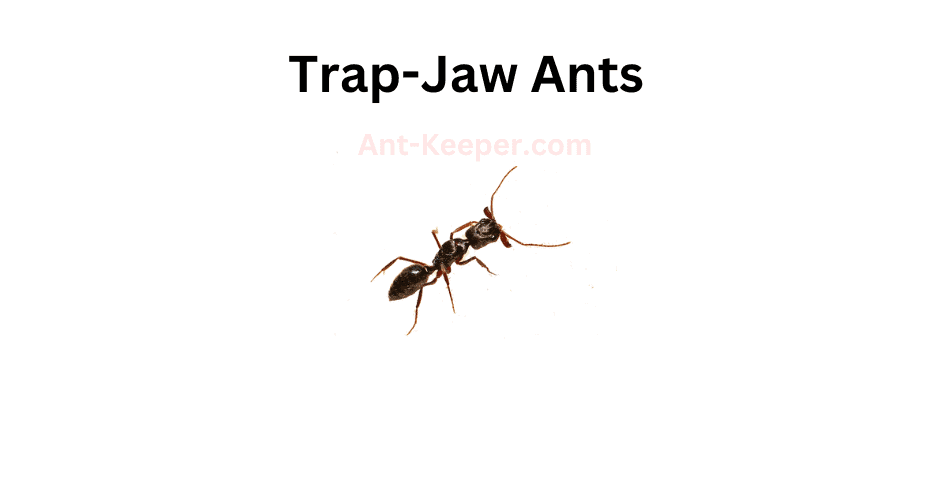
Trap-jaw ants are a species of ants that belong to the genus Odontomachus.
These ants are known for their unique and powerful mandibles, which they use to capture prey and defend their colonies.
The mandibles of trap-jaw ants are capable of closing at incredible speeds, reaching up to 140 miles per hour.
This allows them to snap their jaws shut with incredible force, which can stun or kill their prey.
Trap-jaw ants are found in a variety of habitats, including forests, grasslands, and deserts.
They are typically active during the day and are known to be highly territorial.
These ants are also known for their ability to jump, which they use to escape danger or to capture prey.
Trap-jaw ants are omnivorous, meaning that they eat both plant and animal matter.
They are known to feed on a variety of insects, including other ants, as well as nectar and other sweet substances.
These ants are also known to be scavengers, feeding on dead insects and other organic matter.
The colonies of trap-jaw ants are typically small, with only a few hundred individuals.
However, they are highly organized and have a strict social hierarchy.
The queen is the largest member of the colony and is responsible for laying eggs.
The workers, which are all female, are responsible for foraging, caring for the young, and defending the colony.
Overall, trap-jaw ants are fascinating creatures that have evolved unique adaptations to help them survive in their environments.
Their powerful mandibles and jumping abilities make them formidable predators, while their social organization allows them to work together to protect their colonies and ensure their survival.
2) Carpenter And Sugar Ants, Camponotus

Carpenter ants and sugar ants are two common species of ants found in many regions of the world.
Carpenter ants are known for their ability to excavate wood and create nests within it.
They are typically larger in size than sugar ants and have a black or dark brown coloration.
Carpenter ants are also known for their strong mandibles, which they use to chew through wood and other materials.
Sugar ants, on the other hand, are smaller in size and have a yellow or brown coloration.
They are named for their preference for sugary foods and are often found in kitchens and other areas where food is stored.
Sugar ants are also known for their ability to form large colonies, with thousands of individual ants working together to gather food and care for their young.
Both carpenter ants and sugar ants play important roles in their ecosystems.
Carpenter ants help to break down dead wood and other plant material, which helps to recycle nutrients back into the soil.
Sugar ants help to disperse seeds and pollinate plants, which helps to maintain healthy ecosystems.
However, both species can also be pests when they invade human homes and buildings.
Carpenter ants can cause damage to wooden structures, while sugar ants can contaminate food and be a nuisance to homeowners.
It is important to take steps to prevent ant infestations and to control them if they do occur, in order to protect both human health and the health of the environment.
3) Acrobat Ants, Crematogaster

Acrobat ants, also known as Crematogaster spp., are a genus of ants that are found in various parts of the world.
These ants are known for their unique ability to contort their bodies and move in acrobatic ways, hence their name.
Acrobat ants are relatively small, with workers measuring between 2-5mm in length.
They are typically brown or black in color, with a slender body and long legs.
These ants are known for their aggressive behavior and will readily defend their nests against intruders.
One of the most interesting features of acrobat ants is their ability to use their mandibles to grip onto surfaces and contort their bodies in unusual ways.
This allows them to move along narrow branches, twigs, and other surfaces that would be difficult for other ants to navigate.
They are also able to use this ability to escape from predators, such as birds and other insects.
Acrobat ants are omnivorous, meaning that they will eat both plant and animal matter.
They are known to feed on insects, nectar, and honeydew, as well as fruits and seeds.
These ants are also known to tend to aphids, protecting them from predators in exchange for the sweet honeydew that the aphids produce.
In terms of their social structure, acrobat ants are typically organized into colonies that are led by a queen.
The queen is responsible for laying eggs, while the workers are responsible for foraging, caring for the young, and defending the nest.
Overall, acrobat ants are fascinating creatures that have adapted unique abilities to survive in their environments.
Their acrobatic abilities and aggressive behavior make them a formidable force in the insect world.
4) Trailing Pharaoh And Timid Ants, Monomorium

The Trailing Pharaoh ant, also known as the Monomorium pharaonis, is a small, reddish-brown ant species that is commonly found in urban areas.
These ants are known for their ability to form large colonies, which can consist of thousands of individuals.
One interesting behavior of the Trailing Pharaoh ant is their tendency to trail behind other ants.
This behavior is thought to be a form of communication, as the trailing ants are able to follow the scent trail left by the leading ants.
This behavior is also used to locate food sources, as the trailing ants are able to follow the trail to the source of the food.
In contrast to the bold behavior of the Trailing Pharaoh ant, the Timid ant, also known as the Temnothorax species, is a much more cautious species.
These ants are small and brown, and are often found in wooded areas.
They are known for their timid behavior, and will often retreat into their nests when threatened.
Despite their timid nature, the Timid ant is still able to form large colonies.
They are also known for their ability to adapt to changing environments, and can be found in a variety of habitats, including forests, meadows, and even urban areas.
Overall, both the Trailing Pharaoh ant and the Timid ant are fascinating species that demonstrate unique behaviors and adaptations.
By studying these ants, scientists can gain a better understanding of the complex social behaviors and ecological roles of ants in their respective environments.
5) Crazy Ants, Nylanderia

Crazy ants, also known as Nylanderia fulva, are a species of ant that belong to the family Formicidae.
They are small in size, measuring only about 2.2 to 3 mm in length, and are reddish-brown in color.
These ants are known for their erratic and unpredictable behavior, hence the name "crazy ants."
Crazy ants are native to South America, but have since spread to other parts of the world, including North America, Asia, and Australia.
They are highly adaptable and can thrive in a variety of environments, including urban areas, forests, and grasslands.
One of the most notable characteristics of crazy ants is their ability to form large colonies with multiple queens.
This allows them to quickly establish themselves in new areas and outcompete other ant species.
Crazy ants are also known for their aggressive behavior towards other insects and animals, including humans.
In addition to their aggressive behavior, crazy ants are also known for their ability to cause damage to electrical equipment.
They are attracted to electrical currents and can easily short-circuit electronics, causing damage and potentially starting fires.
Despite their small size, crazy ants are a formidable species that can have a significant impact on their environment.
As they continue to spread to new areas, it is important to monitor their behavior and take steps to control their populations in order to minimize their impact on ecosystems and human infrastructure.
6) Trap-Jaw Ants, Odontomachus

Trap-jaw ants are a species of ants that belong to the genus Odontomachus.
These ants are known for their unique and powerful mandibles, which they use to capture prey and defend their colonies.
The mandibles of trap-jaw ants are capable of closing at incredible speeds, reaching up to 140 miles per hour.
This allows them to snap their jaws shut with incredible force, which can stun or kill their prey.
Trap-jaw ants are found in a variety of habitats, including forests, grasslands, and deserts.
They are typically active during the day and are known to be highly territorial.
These ants are also known for their ability to jump, which they use to escape danger or to capture prey.
Trap-jaw ants are omnivorous, meaning that they eat both plant and animal matter.
They are known to feed on a variety of insects, including other ants, as well as nectar and other sweet substances.
These ants are also known to be scavengers, feeding on dead insects and other organic matter.
The colonies of trap-jaw ants are typically small, with only a few hundred individuals.
However, they are highly organized and have a strict social hierarchy.
The queen is the largest member of the colony and is responsible for laying eggs.
The workers, which are all female, are responsible for foraging, caring for the young, and defending the colony.
Overall, trap-jaw ants are fascinating creatures that have evolved unique adaptations to help them survive in their environments.
Their powerful mandibles and jumping abilities make them formidable predators, while their social organization allows them to work together to protect their colonies and ensure their survival.
7) Crazy Ants, Paratrechina

Crazy ants, also known as Nylanderia fulva, are a species of ant that belong to the family Formicidae.
They are small in size, measuring only about 2.2 to 3 mm in length, and are reddish-brown in color.
These ants are known for their erratic and unpredictable behavior, hence the name "crazy ants."
Crazy ants are native to South America, but have since spread to other parts of the world, including North America, Asia, and Australia.
They are highly adaptable and can thrive in a variety of environments, including urban areas, forests, and grasslands.
One of the most notable characteristics of crazy ants is their ability to form large colonies with multiple queens.
This allows them to quickly establish themselves in new areas and outcompete other ant species.
Crazy ants are also known for their aggressive behavior towards other insects and animals, including humans.
In addition to their aggressive behavior, crazy ants are also known for their ability to cause damage to electrical equipment.
They are attracted to electrical currents and can easily short-circuit electronics, causing damage and potentially starting fires.
Despite their small size, crazy ants are a formidable species that can have a significant impact on their environment.
As they continue to spread to new areas, it is important to monitor their behavior and take steps to control their populations in order to minimize their impact on ecosystems and human infrastructure.
8) Big Headed Ants, Pheidole

Big Headed Ants, also known as Pheidole megacephala, are a species of ant that belong to the family Formicidae.
These ants are known for their distinctive large heads, which are used for defense and communication within their colonies.
Big Headed Ants are typically found in tropical and subtropical regions, where they build their nests in soil, leaf litter, and other organic matter.
They are omnivorous, feeding on a variety of insects, seeds, and other small organisms.
One of the most interesting aspects of Big Headed Ants is their social behavior.
They live in large colonies, with a queen ant at the center of the hierarchy.
The queen is responsible for laying eggs, while the other ants in the colony perform various tasks such as foraging for food, caring for the young, and defending the colony from predators.
Big Headed Ants are also known for their ability to displace other ant species in their habitats.
They are aggressive and have been known to attack and kill other ants, as well as compete with them for resources.
Despite their aggressive behavior, Big Headed Ants are not considered a major pest species.
However, their ability to displace other ant species and their potential impact on native ecosystems make them an important species to study and monitor.
9) Platythyrea
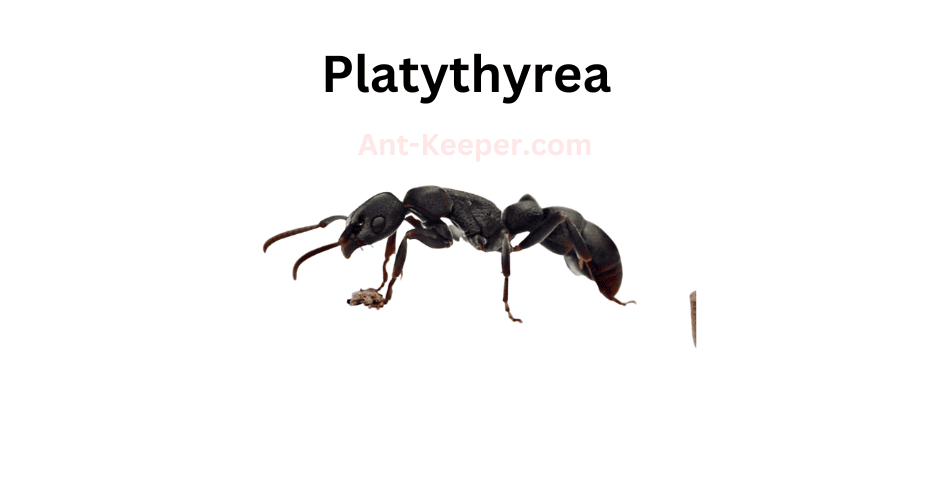
Platythyreabe is a species of ant that belongs to the family Formicidae.
These ants are known for their unique physical characteristics, including their flattened bodies and elongated mandibles.
Platythyreabe ants are typically found in forested areas and are known to be active foragers, often hunting for small insects and other invertebrates.
One of the most interesting aspects of Platythyreabe ants is their social behavior.
These ants live in colonies that are typically composed of several hundred individuals.
Within these colonies, there is a strict hierarchy, with a single queen ant at the top.
The queen is responsible for laying eggs, while the other ants in the colony are responsible for caring for the young and maintaining the nest.
Platythyreabe ants are also known for their aggressive behavior.
When threatened, these ants will use their elongated mandibles to defend themselves and their colony.
They are also known to release a chemical signal that alerts other ants in the colony to the presence of a threat.
Despite their aggressive behavior, Platythyreabe ants play an important role in their ecosystem.
They help to control populations of small insects and other invertebrates, and they also serve as a food source for larger predators.
Overall, Platythyreabe ants are fascinating creatures that offer a unique glimpse into the complex world of social insects.
10) Pseudoponera
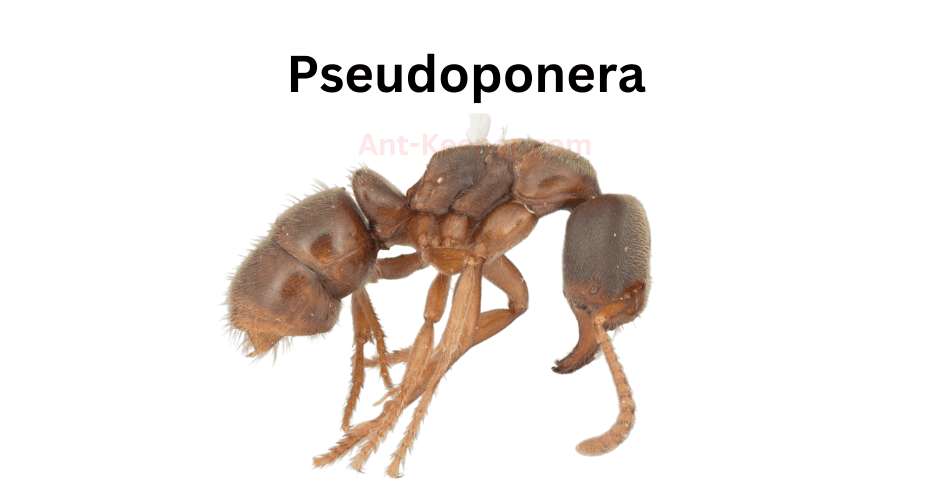
Pseudoponerabe is a species of ant that belongs to the family Formicidae.
These ants are known for their unique physical characteristics and behavior.
They are small in size, measuring only a few millimeters in length, and have a dark brown or black coloration.
One of the most distinctive features of Pseudoponerabe ants is their elongated mandibles.
These mandibles are used for a variety of tasks, including hunting, defense, and nest building.
The ants are also known for their aggressive behavior, and will not hesitate to attack other insects or animals that they perceive as a threat.
Pseudoponerabe ants are typically found in forested areas, where they build their nests in the soil or in decaying wood.
They are omnivorous, feeding on a variety of insects, fruits, and seeds.
The ants are also known to engage in trophallaxis, a behavior in which they exchange food with other members of their colony.
Like many other ant species, Pseudoponerabe ants have a complex social structure.
They live in colonies that can contain thousands of individuals, with each ant having a specific role to play in the colony's survival.
The queen ant is responsible for laying eggs, while the worker ants are responsible for foraging, nest building, and caring for the young.
Overall, Pseudoponerabe ants are fascinating creatures that play an important role in their ecosystem.
Their unique physical characteristics and behavior make them a fascinating subject for study, and their presence in forested areas helps to maintain the delicate balance of nature.
11) Ponerine Ants, Pseudoponera
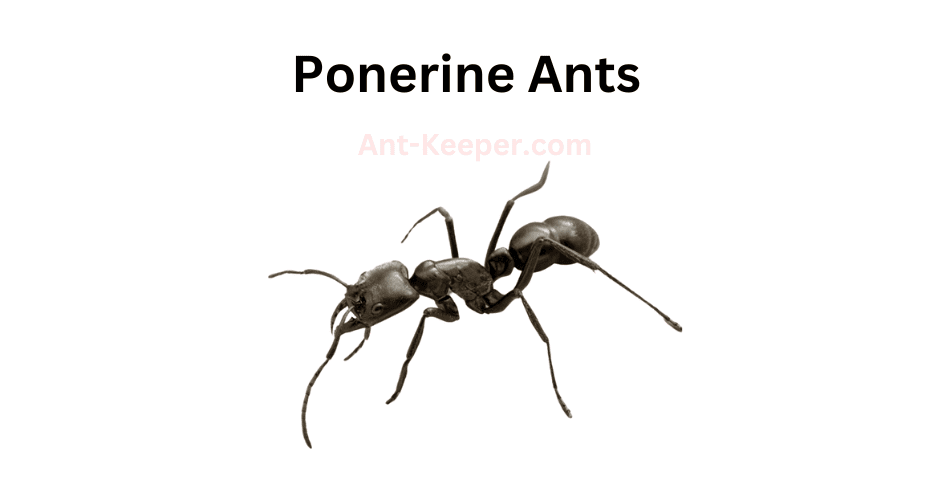
Ponerine ants are a diverse group of ants belonging to the subfamily Ponerinae.
They are found in various habitats, including forests, grasslands, and deserts, and are known for their aggressive behavior and powerful stings.
Ponerine ants are typically medium to large in size, with workers ranging from 3 to 15 millimeters in length.
They have a distinctive appearance, with elongated bodies and long, curved mandibles that they use to capture prey and defend their colonies.
These ants are solitary hunters, and their diet consists mainly of other insects, spiders, and small invertebrates.
They are also known to scavenge on carrion and plant nectar.
Ponerine ants are highly territorial and will aggressively defend their nests against intruders.
They are known for their painful stings, which can cause swelling and discomfort in humans.
Despite their aggressive behavior, ponerine ants play an important role in their ecosystems.
They help to control populations of other insects and contribute to soil health through their nest-building activities.
Overall, ponerine ants are a fascinating and important group of ants that play a vital role in many ecosystems around the world.
12) Syllophopsis
Syllophopsisbe is a species of ant that belongs to the family Formicidae.
These ants are known for their small size, measuring only about 2-3 millimeters in length.
They have a dark brown or black coloration and a slender body shape.
Syllophopsisbe ants are typically found in forested areas, where they build their nests in soil or leaf litter.
They are known to be arboreal, meaning they are capable of climbing trees and foraging for food in the canopy.
These ants are omnivorous, feeding on a variety of food sources including insects, nectar, and plant sap.
They are also known to engage in trophallaxis, a behavior where they exchange food and other substances with other members of their colony.
Syllophopsisbe ants are social insects, living in colonies that can range in size from a few dozen to several hundred individuals.
They have a hierarchical social structure, with a queen ant at the top and various worker ants performing different tasks such as foraging, nest building, and caring for the young.
Overall, Syllophopsisbe ants play an important role in forest ecosystems, contributing to nutrient cycling and serving as a food source for other animals.
13) Flower Ants, Monomorium Floricola
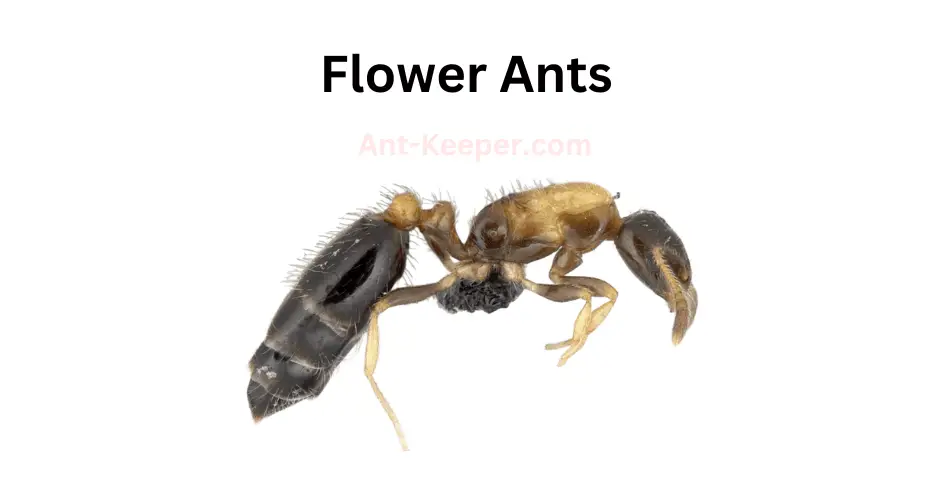
The Flower Ant, also known as the Camponotus consobrinus, is a species of ant that belongs to the Camponotus genus.
These ants are commonly found in various habitats, including forests, grasslands, and gardens.
They are known for their unique behavior of collecting nectar and pollen from flowers, hence their name.
The Flower Ants are relatively large, with workers measuring up to 12mm in length.
They have a black or dark brown body with reddish-brown legs and antennae.
The queen ants are even larger, measuring up to 18mm in length.
These ants are known for their strong mandibles, which they use to cut through plant material and defend their colony.
The Flower Ants are social insects that live in colonies consisting of a queen, workers, and males.
The queen is responsible for laying eggs, while the workers take care of the young and forage for food.
The males are responsible for mating with the queen.
One of the unique characteristics of the Flower Ants is their relationship with plants.
They are known to collect nectar and pollen from flowers, which they use as a source of food.
In return, they help pollinate the flowers, which is essential for the plants' reproduction.
The Flower Ants are also known for their aggressive behavior towards other ant species.
They will defend their territory and resources fiercely, often engaging in battles with other ant colonies.
In conclusion, the Flower Ants are a fascinating species of ant that have a unique relationship with plants.
They play an important role in pollination and are essential for the ecosystem.
Their aggressive behavior towards other ant species also highlights their importance in maintaining the balance of the ecosystem.
14) Crazy Ants, Nylanderia Bourbonica

Crazy ants, also known as Nylanderia fulva, are a species of ant that belong to the family Formicidae.
They are small in size, measuring only about 2.2 to 3 mm in length, and are reddish-brown in color.
These ants are known for their erratic and unpredictable behavior, hence the name "crazy ants."
Crazy ants are native to South America, but have since spread to other parts of the world, including North America, Asia, and Australia.
They are highly adaptable and can thrive in a variety of environments, including urban areas, forests, and grasslands.
One of the most notable characteristics of crazy ants is their ability to form large colonies with multiple queens.
This allows them to quickly establish themselves in new areas and outcompete other ant species.
Crazy ants are also known for their aggressive behavior towards other insects and animals, including humans.
In addition to their aggressive behavior, crazy ants are also known for their ability to cause damage to electrical equipment.
They are attracted to electrical currents and can easily short-circuit electronics, causing damage and potentially starting fires.
Despite their small size, crazy ants are a formidable species that can have a significant impact on their environment.
As they continue to spread to new areas, it is important to monitor their behavior and take steps to control their populations in order to minimize their impact on ecosystems and human infrastructure.
15) Longhorn Crazy Ants, Paratrechina Longicornis
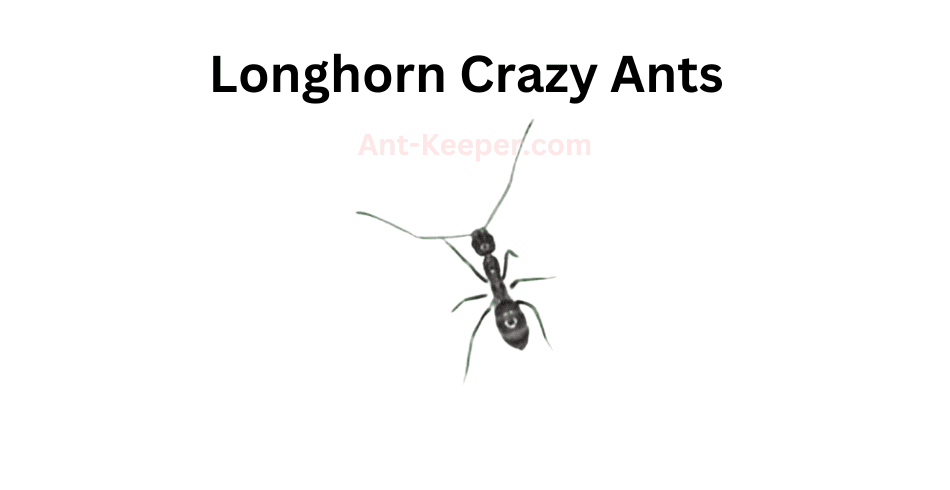
The Longhorn Crazy Ant (Paratrechina longicornis) is a small, dark brown ant species that is known for its erratic and unpredictable behavior.
These ants are typically found in warm, humid environments and are often found in urban areas, where they can be a nuisance to homeowners and businesses.
One of the most distinctive features of the Longhorn Crazy Ant is its long, slender antennae, which can be up to twice the length of its body.
These antennae are used to detect chemical signals from other ants and to navigate through their environment.
Longhorn Crazy Ants are omnivorous and will feed on a wide variety of foods, including insects, fruits, and sweet liquids.
They are also known to be scavengers, and will often invade other ant colonies to steal food and resources.
One of the most interesting aspects of the Longhorn Crazy Ant is its behavior.
These ants are known for their erratic movements and unpredictable behavior, which can make them difficult to control.
They are also known for their ability to form large, sprawling colonies that can quickly take over an area.
Despite their small size, Longhorn Crazy Ants can be a significant pest problem, particularly in urban areas.
They can invade homes and businesses, contaminate food, and cause damage to electrical equipment.
As a result, it is important to take steps to control these ants and prevent infestations from occurring.
16) Big Headed Ants, Pheidole Megacephala

Big Headed Ants, also known as Pheidole megacephala, are a species of ant that belong to the family Formicidae.
These ants are known for their distinctive large heads, which are used for defense and communication within their colonies.
Big Headed Ants are typically found in tropical and subtropical regions, where they build their nests in soil, leaf litter, and other organic matter.
They are omnivorous, feeding on a variety of insects, seeds, and other small organisms.
One of the most interesting aspects of Big Headed Ants is their social behavior.
They live in large colonies, with a queen ant at the center of the hierarchy.
The queen is responsible for laying eggs, while the other ants in the colony perform various tasks such as foraging for food, caring for the young, and defending the colony from predators.
Big Headed Ants are also known for their ability to displace other ant species in their habitats.
They are aggressive and have been known to attack and kill other ants, as well as compete with them for resources.
Despite their aggressive behavior, Big Headed Ants are not considered a major pest species.
However, their ability to displace other ant species and their potential impact on native ecosystems make them an important species to study and monitor.
17) Singapore Ants, Trichomyrmex Destructor
The Singapore ant, also known as the Asian needle ant, is a species of ant that belongs to the Formicidae family.
These ants are known for their aggressive behavior and are considered to be a nuisance pest in many areas.
They are typically found in urban and suburban environments, where they can be seen foraging for food and building their nests.
The Singapore ant is a small ant, measuring only a few millimeters in length.
They are typically black or dark brown in color, with a slender body and long legs.
These ants are known for their sharp stingers, which they use to defend themselves and their colony.
The Singapore ant is a social insect, living in large colonies that can contain thousands of individuals.
They are organized into a caste system, with workers, soldiers, and a queen.
The workers are responsible for foraging for food, caring for the young, and maintaining the nest.
The soldiers are larger and more aggressive, and are responsible for defending the colony from predators.
These ants are omnivorous, feeding on a variety of foods including insects, fruits, and sweet substances.
They are known for their ability to adapt to different environments, and can be found in a variety of habitats including forests, grasslands, and urban areas.
Despite their small size, the Singapore ant can be a significant pest in urban areas.
They are known for their aggressive behavior and can sting humans and pets if provoked.
They can also damage crops and invade homes in search of food.
Overall, the Singapore ant is a fascinating species of ant that is well adapted to urban environments.
While they can be a nuisance pest, they play an important role in the ecosystem and are an important part of the food chain.
Check Out Some Of Our Other Ants By Location Posts
| Types Of Ants In Guinea | Located in West Africa, Guinea is a country known for its diverse and unique environment. The country is bordered by the Atlantic Ocean to the ... |
| Types Of Ants In Saudi Arabia | Saudi Arabia, located in the Middle East region of Western Asia, is a country known for its vast deserts, unique wildlife, and extreme weather conditions. ... |
| Types Of Ants In Haiti | Haiti, located in the Caribbean region, is a country known for its diverse and unique environment. The country’s tropical climate is characterized by warm temperatures ... |
| Types Of Ants In Chile North, Chile | Chile North is a region located in the northern part of Chile, bordered by Peru to the north and Bolivia to the east. This region ... |
| Types Of Ants In Morelos, Mexico | Morelos, Mexico is a region located in the central part of the country, bordered by the states of Mexico, Puebla, and Guerrero. The region is ... |
